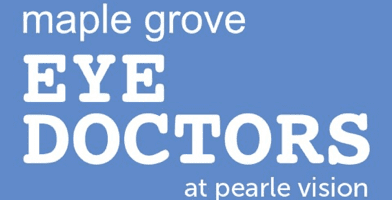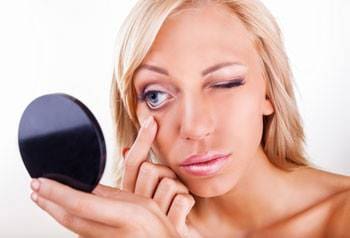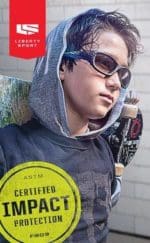Eyecare, Eyewear, and Driving
Driving is a vision-specific task and will remain so until driverless vehicles are proven by the test of time. Every state has vision screening as part of the licensing process for operating motor vehicles. Unfortunately, a vision screening has limitations, not the least of which is the skill level of the screener.
Windshields are tilted back to improve gas mileage, and a tilted back windshield is aesthetically pleasing. Unfortunately, this tilt causes light from the dashboard to be reflected into the driver’s eyes. This reflection creates a veiling glare that decreased the contrast of retinal images which are annoying and tiring. For daylight driving there is no better lens for reducing the dashboard’s veiling glare than polarization. Reflected light from horizontal surfaces such as ice, snow, water, car roofs, rear decks and even road surfaces can cast annoying, tiring, and sometimes hazardous polarized glare. Such glare has been implicated in serious accidents, and wearing polarized lenses is one way of limiting these dangerous phenomena.
Tinted lenses can be very helpful for daylight driving, but they should not be used for dawn, dusk, or night driving. At night a light tint reduces the reach of headlights in direct proportion to the absorption of the tint. Using a gradient tint offers an option of nearly instant self adjustment of the lens’ absorption. This can be especially appreciated by patients over 50, who have less active pupils and longer glare recovery times. By lowering their chin, drivers can quickly reduce the retinal illumination as they turn toward the sun or when the conditions vary due to broken overcast conditions.
Antireflective (AR) treatment improves the performance of every lens design, every lens material, and every lens prescription. It has advantages for daylight driving because it allows the formation of a clearer, sharper retinal image. For night, dusk, and dawn driving it reduces the effects of ‘ghost’ images caused by light internally reflected within the lenses. The reach of headlights will be increased since the light transmission of AR lenses is higher.
HELPFUL TIPS FOR DRIVERS
- Even if your glasses’ prescription for distance is not very strong, put them on at the start of any long trip. You tire less quickly and feel better at the end of the trip if you are not straining to see.
- Keep your windshield clean inside and out. Filming on either side can cause a veiling glare when bright light hits it.
- Never use the vinyl cleaning and brightening agents on your dashboard because they make the veiling glare effect of reflected light from the dashboard worse.
- Be sure that you are not tilting your head into a chin-up position as you drive, as it can cause you to have eyestrain and even distance blur from your prescription lenses. Adjusting the seat upward and tilting the steering wheel downward may help you keep a good position.
- Wait until the sun is fully up before putting on sun lenses for driving, and take your sun lenses off before dusk sets in. Dusk and dawn drive times are known to be times at which you need all the light you can get for safe driving.
- To prevent eye fatigue on long road trips, keep your eyes moving as you check your mirrors and potential hazards from either side. Staring straight ahead causes eye fatigue.
- Make a point of ‘triple blinking’ ( 3 fast, full blinks in quick succession) every few minutes especially if your eyes feel dry and have a burning sensation.
- Blinking lights such as another driver’s turn signal or the lights of an emergency vehicle can hold your visual attention long after those lights are no longer relevant to your safety.
- Don’t stare at bright oncoming headlights. A prolonged look at bright lights will mean a prolonged glare recovery period after you look away from them.
- Take frequent stretch and/or coffee breaks on long trips BEFORE you start feeling tired. While on break, turn your eyes UP, DOWN,RIGHT, LEFT, AND TOWARD ALL DIRECTIONS IN BETWEEN as far as you can. This can refresh the muscles that aim your eyes, and it will tend to ward off fatigue.






